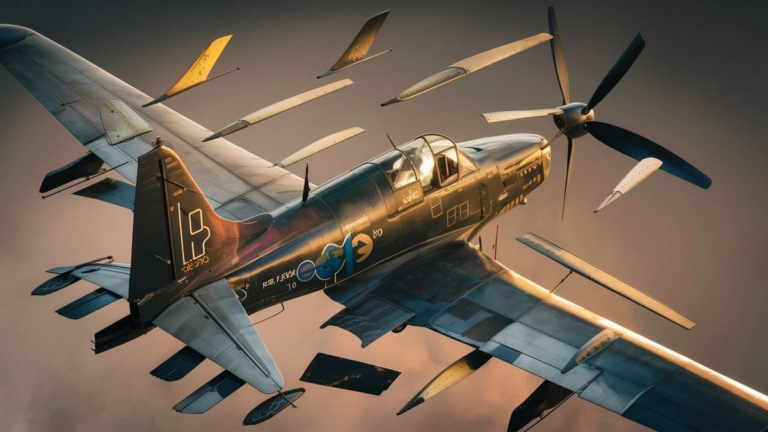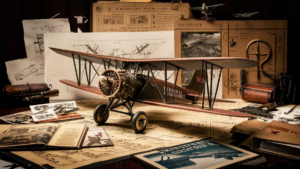Ensuring the longitudinal stability of an airplane is a critical aspect of aviation engineering, directly impacting the safety and performance of the aircraft. Longitudinal stability refers to the aircraft’s ability to maintain a steady pitch attitude during flight, resisting sudden and unwanted changes. Several factors contribute to this crucial characteristic, shaping the aerodynamic and design considerations of modern aircraft.
Aerodynamic Center and Center of Gravity
At the core of longitudinal stability lies the relationship between the aerodynamic center and the center of gravity. The aerodynamic center, often located near the wing’s midpoint, is the point where the aircraft’s lift force can be considered to act. For stable flight, the center of gravity must be positioned slightly ahead of the aerodynamic center. This configuration creates a restoring moment, ensuring the aircraft returns to its original attitude after disturbances.
Wing Design and Airfoil Shape
The wing design plays a pivotal role in determining the longitudinal stability of an airplane. Engineers carefully consider the airfoil shape, wing sweep, and aspect ratio to influence the aircraft’s response to pitch changes. High aspect ratio wings, for instance, enhance stability by promoting smoother airflow and reducing induced drag. Additionally, the choice of wing sweep affects the location of the aerodynamic center, impacting the overall stability characteristics of the aircraft.
Stabilizer Surfaces and Tail Design
The tail section of an airplane, particularly the horizontal stabilizer and elevator, significantly contributes to longitudinal stability. The horizontal stabilizer generates a downward force, countering the nose-up tendency created by the main wings. The elevator, in turn, allows pilots to control the pitch attitude, adjusting the balance between lift and weight forces. A well-designed tail section is essential for achieving and maintaining longitudinal stability throughout various flight conditions.
Flight Control Systems
Advancements in aviation technology have introduced sophisticated flight control systems that play a crucial role in enhancing longitudinal stability. Fly-by-wire systems and advanced autopilots continuously monitor and adjust control surfaces to ensure optimal stability. These systems work in conjunction with traditional control inputs from the pilot, providing a seamless and stable flying experience.
Weight Distribution and Fuel Management
The distribution of weight, including the positioning of passengers, cargo, and fuel, directly influences the aircraft’s center of gravity. Proper weight distribution is vital for maintaining longitudinal stability, especially during critical phases of flight. Pilots and airline operators adhere to precise weight and balance calculations to ensure the aircraft performs within specified parameters, contributing to overall safety and stability.
Weather and Environmental Factors
External factors, such as turbulence and atmospheric conditions, can influence the longitudinal stability of an airplane. Engineers account for these variables during the design phase, incorporating features that mitigate the impact of turbulence and other environmental challenges. Pilots also receive training to manage these factors effectively during flight, ensuring a stable and secure journey for passengers.
Conclusion
In conclusion, the longitudinal stability of an airplane is a multifaceted concept that encompasses aerodynamics, design considerations, and technological innovations. By carefully balancing the relationship between the aerodynamic center and center of gravity, optimizing wing and tail designs, integrating advanced flight control systems, and managing weight distribution, aviation engineers create aircraft that exemplify stability and safety. As technology continues to evolve, so too will the methods and systems employed to ensure the enduring stability of airplanes in the dynamic realm of aviation.
Fuel Efficiency and Longitudinal Stability
While the distribution of weight, including passengers and cargo, is crucial for longitudinal stability, it also plays a significant role in the fuel efficiency of an aircraft. Engineers strive to find an optimal balance, as excess weight can lead to increased fuel consumption. Efficient fuel management contributes not only to environmental sustainability but also to the overall economic viability of air travel.
Materials and Structural Considerations
Beyond aerodynamics, the materials used in aircraft construction and their structural design influence longitudinal stability. Modern aircraft utilize lightweight yet durable materials, such as composites and alloys, to ensure a favorable strength-to-weight ratio. This careful selection of materials contributes to the overall stability of the aircraft while meeting stringent safety standards.
Frequently Asked Questions
| Question | Answer |
|---|---|
| How does wing sweep impact stability? | Wing sweep affects the location of the aerodynamic center, influencing the overall stability characteristics of the aircraft. Higher wing sweep can lead to improved stability in certain flight conditions. |
| What role do fly-by-wire systems play in longitudinal stability? | Fly-by-wire systems enhance stability by continuously monitoring and adjusting control surfaces. They work in tandem with traditional control inputs, providing a seamless and stable flying experience. |
| How do environmental factors affect longitudinal stability? | External factors like turbulence and atmospheric conditions can impact stability. Engineers design aircraft to mitigate these effects, and pilots receive training to manage such challenges effectively during flight. |
Aircraft Stability in Extreme Conditions
Ensuring longitudinal stability is not only about standard flight conditions. Engineers also focus on designing aircraft that can maintain stability during extreme conditions, such as severe turbulence or sudden altitude changes. This capability contributes to the overall safety and resilience of the aircraft.
See also:






